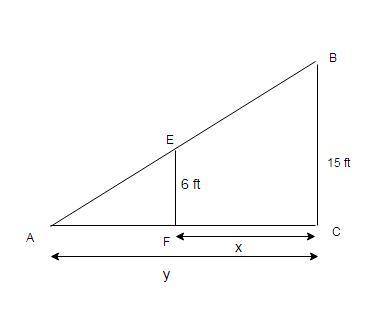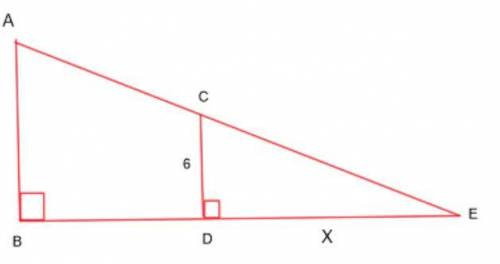
Physics, 12.11.2019 22:31 nancieabreu4491
Aman 6 feet tall walks at a rate of 6 feet per second away from a light that is 15 feet above the ground.
(a) when he is 10 feet from the base of the light, at what rate is the tip of his shadow moving?
(b) when he is 10 feet from the base of the light, at what rate is the length of his shadow changing?

Answers: 1


Another question on Physics

Physics, 21.06.2019 18:50
The summit of chimborazo, in ecuador, which is at a distance of about 6,384 km from the earth's center. the bottom of the mariana trench, in the western pacific ocean, which is nearly 6,370 km from the center of the earth. on the surface of earth on the equator line.
Answers: 1

Physics, 21.06.2019 20:20
An asteroid is discovered in a nearly circular orbit around the sun, with an orbital radius that is 2.47 times earth's. what is the asteroid's orbital period, its "year," in terms of earth years?
Answers: 1

Physics, 21.06.2019 21:10
Tafari worked one summer on a ship that set weather buoys in the ocean. he watched how one of the buoys moved in the water. describe which parts of the wave would cause the buoy to bob up and down. which wave property determined how fast the buoys bobbed in the water? he observed that when the wind blew harder, the ocean waves were larger, and the buoys moved away from the ship. what effect, if any, did the waves have on how far the buoys moved? explain your answer.
Answers: 3

Physics, 22.06.2019 06:20
Clothing made of several thin layers of fabric with trapped air in between, often called ski clothing, is commonly used in cold climates because it is light, fashionable, and a very effective thermal insulator. so it is no surprise that such clothing has largely replaced thickand heavy old-fashioned coats. (a) consider a jacket made of five layers of 0.1-mm-thick synthetic fabric (k = 0.13 w/m·°c) with 1.5-mm-thick air space (k = 0.026 w/m·°c) between the layers. assuming the inner surface temperature of the jacket to be 28°c and the surface area to be 1.25 m2, determine the rate of heat loss through the jacket when the temperature of the outdoors is 0°c and the heat transfer coefficient at the outer surface is 25 w/m2·°c. (b) what would your response be if the jacket is made of a single layer of 0.5-mm-thick synthetic fabric? what should be the thickness of a wool fabric (k = 0.035 w/m·°c) if the person is to achieve the same level of thermal comfort wearing a thick wool coat instead of a five-layer ski jacket?
Answers: 1
You know the right answer?
Aman 6 feet tall walks at a rate of 6 feet per second away from a light that is 15 feet above the gr...
Questions

English, 15.12.2020 14:00


Mathematics, 15.12.2020 14:00

Mathematics, 15.12.2020 14:00


Mathematics, 15.12.2020 14:00





History, 15.12.2020 14:00


History, 15.12.2020 14:00

English, 15.12.2020 14:00

Geography, 15.12.2020 14:00

Mathematics, 15.12.2020 14:00




















